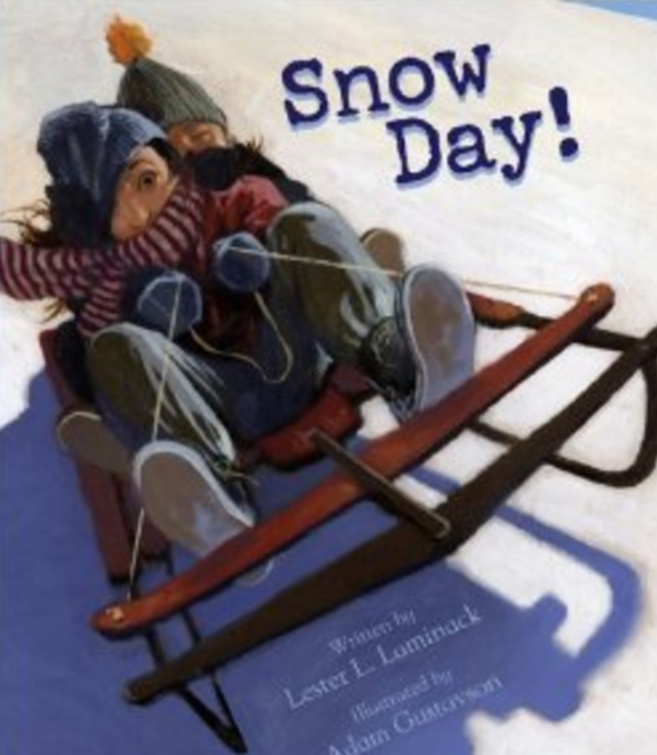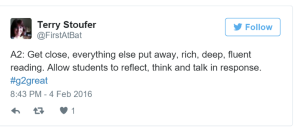By, Jenn Hayhurst
On February 4, 2016, #G2Great initiated our five-part series: Holding Tight to Practices that Matter and turned the spotlight on read-aloud
Teachers are living in a high tech, data driven, standards based world. Rigor and grit are expected from students and there is no time to waste. Should teachers squander precious minutes of the school day merely reading aloud to students? After all, what would students actually be doing while a teacher reads aloud? Besides, we have computer based programs that read to students, so teachers can use that time in more productive ways. Right? No that’s just scary! There are those who believe the best way to support standards, rigor, and grit is to devote time that might be spent on read aloud to other pursuits.
Teachers who understand best practices in literacy instruction know that nothing could be further from the truth. I do believe that students need to develop grit and that we are the gatekeepers of rigor. I also believe that reading aloud is a way to achieve both goals. Our brains are hard wired for story. Just do a quick search on Google and the neuroscience evidence is overwhelming to support this claim. But really, the only proof anyone needs is to to look out into a classroom full of students who are listening with rapt attention to their teachers. Children of all ages are drawn into complex narratives through a dramatic reading, or ushered into a world of wonder fueled by new ideas to understand the value of read aloud:
I couldn’t help but feel elated as I read the Storify from the February 4th #G2Great Chat, Holding Tight to Practices That Matter: Read Aloud. Educators from all walks of life were extolling the value of reading aloud. Teachers shared links, books, and ways to support the work with gusto. Why would they do that? The only reason I can think of is that teachers are remarkable, unselfish professionals who are motivated by improving the lives of students.
We are working to safeguard the practices that matter most because they have the greatest impact for student achievement. Building a community around literature is one way to ensure that we build both community and critical thinking skills. It seems simple but it’s true that everything begins with a great book. To that end, there were so many great books that were shared and will, with a little faith, find great homes in classrooms everywhere. Mary compiled a list of your recommendations and created a fabulous resource to share ( just click here ) with everyone.
I am not immune to buying more books than I can scarcely afford. I just bought Lester Laminack’s Snow Day! It’s a wonderful book and I can’t wait to share it with students. I wonder what books will be bought or borrowed because of last Thursday’s chat? How will this chat impact the work that happens with students? We constantly inspire each other to be the best teachers we can be because each day we spend with students is precious and we don’t have time to waste.
There is no question in my mind that the precious minutes we invest in read-aloud is time well spent.
Click here to watch Lester…








Jenn,
It’s so critical that students also cultivate a “love for reading” from demonstrations of Read Alouds from teachers who share their love and passion for books! Sharing Lester Laminack is also such a wise addition to this blog post!
What a treat to have the 3 page book list from Mary! How special to include tweets and the culmination of our responses within your post!
YOU all, #G2Great initiators, are the BEST! <3
Fran,
Thank you for your kind words. I so agree with you. I think teachers who identify themselves as readers and writers understand the deeper structures that create excellence – we are teaching readers, not books, and writers, not pieces. Our passion sparks genuine literacy love for students. We need to inspire – inspire ourselves and our students. Keep doing the work that matters most.
Jenn